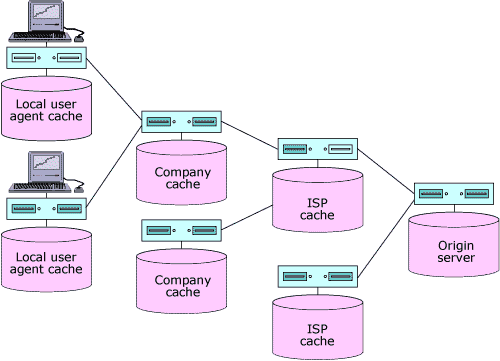011020-2
Answer
Uncontrolled caching
All can be combined with chaining of successive levels of caches:

011020-2 |
A common technique to reduce load on a network is to replicate some information in several places, so that the information needed can be downloaded from a nearby copy. Describe different strategies for managing such replication. Which problems can occur, and how can they be handled? | |
Answer |
Uncontrolled caching |
Copies are kept for a certain time, without knowledge if the original has changed. Can be combined with methods of guessing liftetime. |
| Expiration-time-controlled cahing | Original is delivered with a lifetime, and cached for this time. | |
| Always check strategy | For every request, a check is made with the server of the original to see if it has been changed. | |
| Master-controlled strategy | The master server, which holds the original, knows where replicates are kept and updates them when the original is changed. It may also know secondary replicates, who furthers changes to the original. | |
| No-change allowed | Information is organized into items, which can never be modified. | |
| Pre-loading | A cache may request new version of popular documents before any user actually asks for them. Advantage: Fast response time. Disadvantage: May load documents no one wants to see. | |
| Manual reload | The user can (this is common in web browsers) ask for a reload if the user believes that a page is not up-to-date. The advantage is that a human may know better than a machine, the disadvantage that many users do not understand when and how to use this facility. | |
|
All can be combined with chaining of successive levels of caches:
|
||